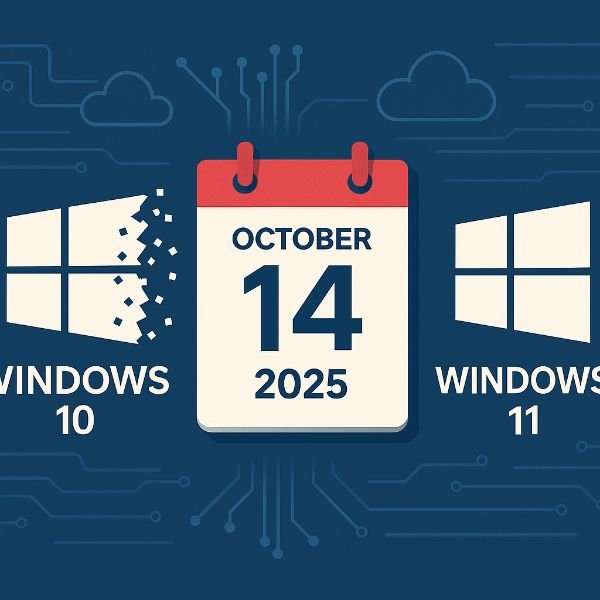
After nearly a decade of service, Microsoft will officially end support for Windows 10 on October 14, 2025.
This isn’t just a technical update—it’s a business-critical moment that requires planning, budgeting, and strategic decision-making. Let’s break down what this means and how we can help you navigate the transition.
🛑 What Does “End of Support” Actually Mean?
When Microsoft ends support for an operating system, it stops providing:
- Security updates and patches
- Bug fixes
- Performance improvements
- Technical support
In short, Windows 10 will no longer be maintained or protected by Microsoft. Any vulnerabilities discovered after October 14, 2025, will remain unpatched—leaving systems exposed to cyber threats and compliance risks.
⚠️ Why This Matters to Your Business
Even if your systems are running smoothly today, continuing to use Windows 10 after its end-of-life date introduces serious risks:
🔐 Security Vulnerabilities
Without regular security updates, your systems become easy targets for malware, ransomware, and other cyberattacks.
📉 Compliance Risks
If your business is subject to data protection regulations (like GDPR, HIPAA, or PCI-DSS), running unsupported software could put you out of compliance—potentially leading to fines or legal issues.
🧩 Software Compatibility
New applications and updates are increasingly optimized for Windows 11. Over time, you may find that essential software no longer works properly on Windows 10.
💸 Rising Support Costs
Maintaining outdated systems often leads to higher IT costs. Troubleshooting, patching, and securing legacy environments becomes more complex and time-consuming.
🌟 Why Upgrade? Key Advantages of Windows 11 for Your Business
Upgrading to Windows 11 isn’t just about staying supported—it’s about moving forward with a platform designed for the modern workplace. Here are some of the standout benefits:
🔐 Advanced Security by Design
Windows 11 includes:
- Hardware-based isolation and TPM 2.0
- Secure Boot and Windows Hello
- Virtualization-based security (VBS)
These features help reduce your attack surface and align with modern cybersecurity best practices.
🧠 Smarter User Experience
Windows 11 offers a cleaner, more intuitive interface that helps users stay focused and productive:
- A centred Start menu and streamlined taskbar
- Snap layouts and virtual desktops for better multitasking
- Improved touch, pen, and voice input support
🌐 Optimized for Hybrid Work
With native support for Microsoft Teams and better integration with Microsoft 365, Windows 11 is built for collaboration:
- Seamless video conferencing and screen sharing
- Cloud-powered file access and syncing
- Enhanced support for remote desktop and device management
⚙️ Better Performance and Efficiency
Windows 11 is optimized for speed and battery life, especially on newer hardware:
- Faster wake-from-sleep times
- Improved memory management
- Reduced background activity for better responsiveness
🛠️ Future-Proofing Your IT
Windows 11 is the platform Microsoft will continue to build on for years to come. By upgrading now, you’re positioning your business to:
- Take advantage of future innovations
- Stay compatible with new software and hardware
- Reduce long-term IT maintenance and support costs
🧭 What You Should Do Next
We recommend taking a proactive approach to ensure your business remains secure, compliant, and productive. Here’s how:
✅ Upgrade to Windows 11
We can help assess your current systems to determine which devices are eligible for upgrade and which may need replacement.
🔄 Replace Outdated Hardware
Some older PCs may not meet Windows 11’s hardware requirements. In these cases, we’ll work with you to:
- Identify non-compliant devices
- Plan a phased hardware refresh
- Minimize downtime and disruption
📅 Don’t Wait Until the Deadline
October 2025 is not that far away, it's worth getting things done in advanced to ensure you aren't opening yourselves up to risk.